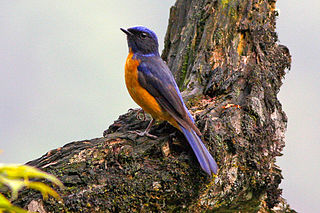 W
WNiltava is a genus of passerine birds in the Old World flycatcher family Muscicapidae.
 W
WThe Chinese vivid niltava is a species of bird in the family Muscicapidae. It is found in the eastern Himalayas to southern China. The Chinese vivid niltava was formerly considered conspecific to the Taiwan vivid niltava. Its natural habitat is subtropical or tropical moist montane forests.
 W
WThe Fujian niltava is a species of bird in the family Muscicapidae. It is found in Cambodia, China, Hong Kong, Laos, Thailand, and Vietnam. Its natural habitats are subtropical or tropical moist lowland forest and subtropical or tropical moist montane forest.
 W
WThe large niltava is a species of bird in the family Muscicapidae. It is found in Bangladesh, Bhutan, Cambodia, China, India, Indonesia, Laos, Malaysia, Myanmar, Nepal, Thailand, and Vietnam. Its natural habitat is subtropical or tropical montane forests.
 W
WThe rufous-bellied niltava is a species of bird in the family Muscicapidae.
 W
WThe rufous-vented niltava is a species of bird in the family Muscicapidae. It is found in Sumatra and the Malay Peninsula. Its natural habitat is subtropical or tropical moist montane forests.
 W
WThe small niltava is a species of bird in the family Muscicapidae, native to the Indian subcontinent and Southeast Asia. It is found in Bangladesh, Bhutan, India, Laos, Myanmar, Nepal, Thailand, Tibet and Vietnam. Its natural habitat is subtropical or tropical moist montane forests.
 W
WThe Taiwan vivid niltava or small vivid niltava is a bird in the family Muscicapidae. The species was first described by Robert Swinhoe in 1864. It is endemic to Taiwan. The Chinese vivid niltava of the Asian mainland, which is larger in size, was formerly considered conspecific. Its natural habitat is subtropical or tropical moist montane forests.